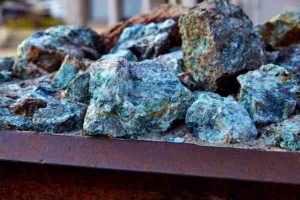
Cobalt deposits in one of Earth’s largest cobalt-mining regions are 150 million years younger than previously thought, according to a new study by University of Alberta geologists.
Working with former post-doctoral fellow Nicolas Saintilan, U of A geochemist Robert Creaser, Canada Research Chair in Isotope Geochemistry, used a new, rhenium-osmium dating system to examine the rich cobalt deposits in the Democratic Republic of Congo.
Their results show that cobalt and copper mineralization occurred during a period of mountain building and deformation between 610 and 470 million years ago, suggesting that the deposits formed 100 to 150 million years more recently than originally thought.
The study also provides critical insight into exploration for cobalt, an important component in rechargeable lithium-ion batteries used in everything from smartphones to hybrid cars.
“Using this new knowledge of the timing of events that formed cobalt deposits, we can target regions for exploring known cobalt deposits and discovering new ones,” said Creaser.
Cobalt enables rechargeable batteries to stock energy without overheating. It is a strategic metal for the technological revolution, critical in efforts to face and remediate climate change.
Because of its use in lithium-ion batteries, cobalt is a hot commodity on the international market—creating steep competition. Most large cobalt deposits are located in developing or poverty-stricken regions in Central Africa. Exploration can be mired in human rights, geopolitical and sustainability issues, Creaser explained.
“The conundrum is that the western world needs cobalt, and the conditions in some places we currently get it from can be exploitative.
“The biggest value of this research is opening the possibility of finding more prospective areas worldwide for sources of cobalt. This background information helps exploration geologists develop ideas of where and where not to look,” said Creaser.
The research was supported by David Selby at Durham University in the United Kingdom. Key samples were provided by Stijn Dewaele at the Royal Museum for Central Africa in Belgium.
The paper, “Sulphide Re-Os Geochronology Links Orogenesis, Salt and Cu-Co Ores in the Central African Copperbelt,” was published in Scientific Reports.
Reference:
N. J. Saintilan et al. Sulphide Re-Os geochronology links orogenesis, salt and Cu-Co ores in the Central African Copperbelt, Scientific Reports (2018). DOI: 10.1038/s41598-018-33399-7
Note: The above post is reprinted from materials provided by University of Alberta.










